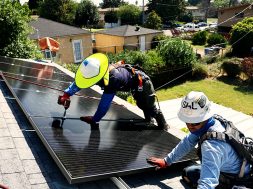
India’s ReNew Power files for IPO that could raise $1 bln
CHENNAI: While investors have been encouraged by India’s large ground-mounted, grid-connected solar parks, the rooftop solar segment had hit its stride in the last financial year. For India’s solar power targets to be met, the rooftop part of the story will have to take off. However, there are concerns as India is not expected to achieve even half of the rooftop solar targets by 2022. Against the ambitious target of 10,000 Megawatt (MW) for March 31, 2018, the country’s cumulative installed capacity of rooftop solar stood at 982 MW as of December 2017. Notably, the government has also downscaled its targets for FY18 to only 1,000 MW of capacity, lower from the original target of 5,000 MW till as recently as December 18, 2017. A closer look at the figures further reveals that the government has achieved just around 9 per cent of the target, pointing to the out of kilter things in India’s rooftop solar programme.
“…Against the target of 60 GW of ground-mounted and 40 GW of rooftop by 2022, we have set up around 16 GW of ground-mounted and 1 GW of rooftop solar. If I can admit, our rooftop programme is not doing well,” reiterated Anand Kumar, secretary, Ministy of New and Renewable Energy, at a CII workshop in January.
What’s the problem?
“The dependency of rooftop solar is on the capital subsidy being provided. There is already a backlog running with MNRE for payment, which fears newer installation. Also, the states aren’t clear about their net metering policies,” said Anil Jain, managing director of Refex Energy, which sets up solar power plants. There are no policy initiatives to support rooftop solar, especially effective net-metering implementation and offering incentives in order to attract financial investors, he said.
Terming the government’s target of achieving 40 GW rooftop solar power by 2022 ‘unrealistic’, Ashish K Nainan, analyst at CARE Ratings, said that for an individual house owner, it is not viable to make transition from subsidised power supplied by the Discoms. “The residential off-grid capacity should be developed through a robust regulatory and policy framework including a remunerative net metering policy,” he said. Realistically, one has to tap thousands of buildings in order to have a 40GW and clearly, there is no one to fund these projects.














